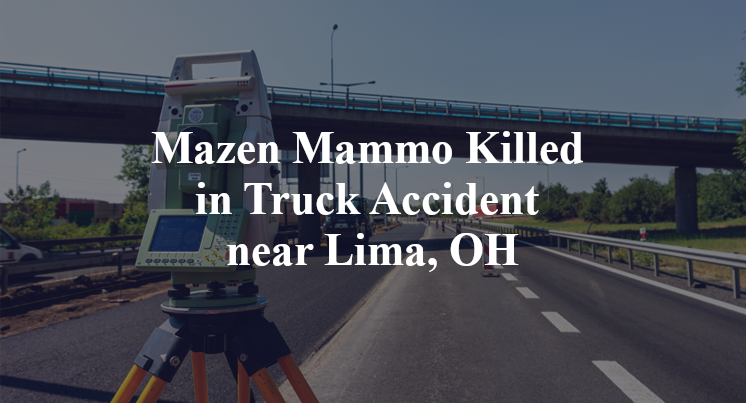Mazen Mammo Killed in Truck Accident near Lima, OH
Allen County, OH — September 10, 2025, Mazen Mammo was killed in a truck accident at about 10:15 a.m. on the southbound Interstate 75.
Authorities said a 2021 Freightliner Cascadia crashed into a 2020 Volvo semi-truck that was stopped in traffic near State Route 81 east of Lima. The impact forced the Volvo into a 2017 Freightliner Cascadia semi-truck, while the first truck caught fire.

The driver of the 2021 Freightliner, 37-year-old Michigan resident Mazen Mammo, died at the scene of the crash, according to authorities.
Volvo driver Nardini Salvatore, 63, and 2017 Freightliner driver Jean Fervil, 73, were hospitalized with minor injuries after the crash, authorities said.
Authorities have not released any additional information about the Bath Township crash at this time. The accident is still under investigation.
Commentary by Attorney Michael Grossman
When people read about a multi-truck collision that leaves one driver dead and others injured, a common question is: How does something like this happen on a straight interstate in broad daylight? It’s tempting to treat it as just another highway pile-up, but when one truck rear-ends another that was already stopped in traffic, it's important to ask why that happened in the first place, and whether it could have been avoided.
From the initial reports, it appears a 2021 Freightliner crashed into the back of a stopped Volvo, pushing it into a third truck. That chain of events raises several unanswered questions, starting with the most basic: Why didn't the first driver stop? Was traffic slowing suddenly? Did the driver fail to see the backup ahead? Was he distracted or fatigued? Depending on whether the traffic jam was sudden or prolonged, different issues could be in play.
To get meaningful answers, investigators need to dig into the data. That starts with the first truck's engine control module (ECM), essentially the black box of a semi, which can show vehicle speed, braking activity and throttle position in the moments leading up to the crash. It can confirm whether the driver ever hit the brakes or if there was any attempt to avoid impact at all.
Beyond that, in-cab cameras, if the truck had them, could help clarify whether the driver was looking at the road or distracted by something else, such as a cell phone. Cell phone records can also help fill in those gaps, especially if the driver was using a personal device instead of a hands-free system.
Another potential line of inquiry is driver fatigue. Was the driver nearing the end of his allowable hours of service? Had he taken the mandatory rest breaks? The logs, both paper and digital, can help confirm whether the driver was operating within the legal limits, or whether he was exhausted and possibly operating under pressure to meet a deadline.
It’s also fair to ask whether the trucking company’s policies played a role. Did they conduct proper background checks? How was the driver trained and evaluated? I’ve handled cases where a company put an unqualified driver on the road after little more than a short road test. In one case, the company had hired someone who had already been fired from multiple jobs for poor performance, and then barely assessed his driving skills before giving him the keys to a big rig. That kind of negligence at the hiring level often comes to light only after something goes terribly wrong.
It’s important to emphasize that just because a truck caught fire doesn’t automatically mean someone made a mistake. Fires in rear-end collisions aren’t unusual, especially when fuel tanks or electrical components are compromised. But that’s exactly why a thorough investigation is so critical. Without a full picture of how the crash unfolded, there's a risk of making assumptions that don't match the evidence.
Key Takeaways:
- It's unclear why the first truck failed to stop in traffic; possible causes include distraction, fatigue or poor visibility.
- ECM data, in-cab cameras and cell phone records can offer crucial insight into the driver’s actions.
- Investigators should examine whether the trucking company properly trained, screened and monitored the driver.
- A full investigation is necessary to determine whether the fire was incidental or tied to mechanical failure or crash dynamics.
- Determining fault in a rear-end truck crash is rarely straightforward and depends on verified evidence, not assumptions.

“These are essential reads for anyone dealing with the aftermath of a truck wreck”– Attorney Cory Carlson